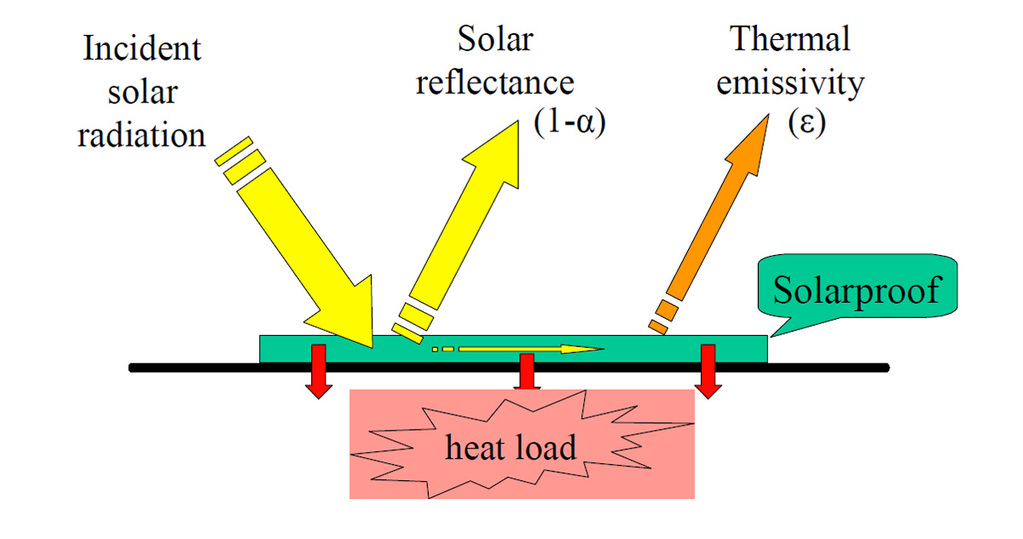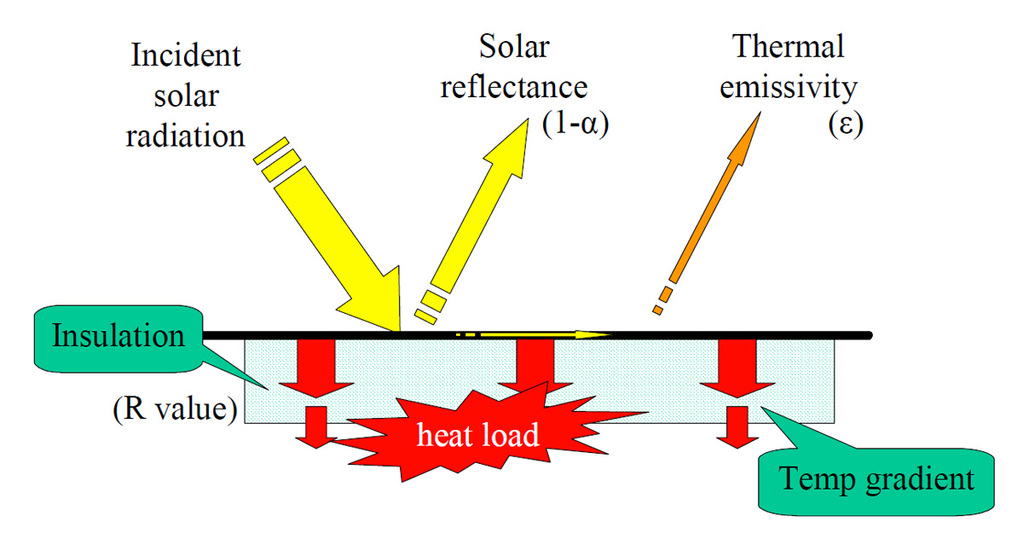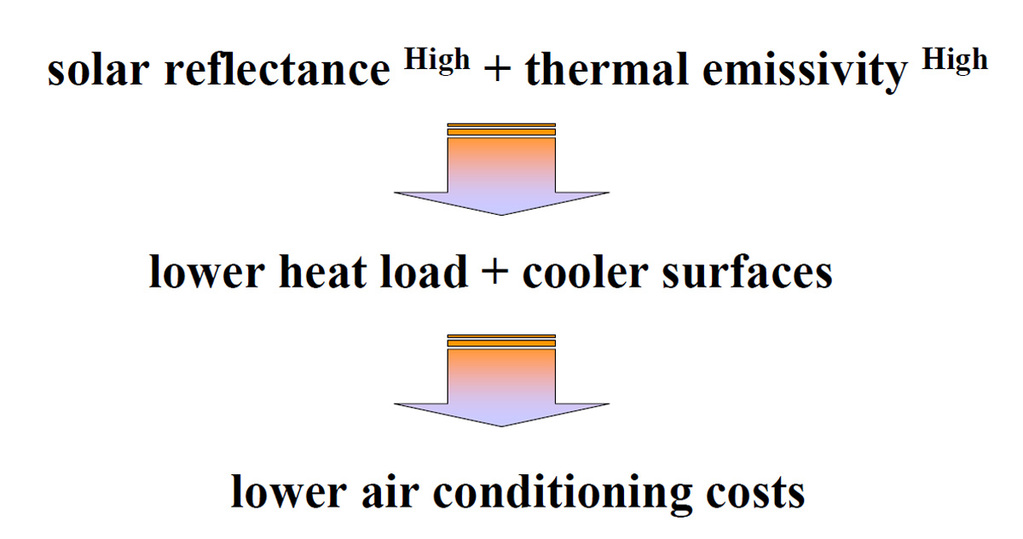Why is a cool roof and cool walls important?
The heat flow into a building from the outside is mainly through the roof and, to a lesser extent, through the walls. The rate at which heat flows into a building depends ultimately on two factors:
- The outside surface temperature of the building (not the air temperature), and
- The temperature inside the building.
The rate of heat flow is proportional to the difference between these two temperatures. The hotter the roof and walls and the lower the internal temperature, the greater the inward heat flow.
What benefit is there if the interior space is ventilated or cooled with an air conditioner?
The economic and environmental consequences of achieving cooler external surface temperatures using are that:
- The same cooling power will result in a cooler temperature inside the building, or
- A given inside room temperature can be maintained with less cooling power, hence
- Coated buildings are cheaper to keep cool, and
- Less electricity consumption means lower greenhouse gas emissions.
What benefit does COOLBOND® provide a passive building?
If there is no ventilation or cooling in the building, the internal temperature will eventually become equal to the temperature of the exterior surface. However, as well as depending on the temperature difference, the flow of heat is also inversely proportional to the ‘R-value’ of the structure. Insulation, when fixed beneath the roof and within the walls, increases the time that it takes for the interior to reach the temperature of the external surfaces.
The lower external surface temperatures that result from the use of COOLBOND® mean that:
- The interior can never get as hot as it would if the structure was uncoated,
- As well as not getting as hot inside, the building will take longer to heat up, and
- The building will cool down more quickly at night as the outside temperature falls.
How does COOLBOND® work?
It works in exactly the opposite way to the black coating now used as a selective surface on solar water heater panels. The chrome black on heating panels absorbs 95% of the sun’s shorter wavelength radiant energy, and limits emission to only 9% of the longer infrared wavelength energy from the collector surface. Hence, very little of the heat that is gained is then lost through emissivity. Because of this selectivity, the chrome black surface may get hotter than the air temperature by 100 degrees Celsius or more.
By contrast, our COOLBOND® coating absorbs only 15% of the sun’s heat and is especially good at re-emitting most of this absorbed energy away from the treated surface (over 95%). The end result is that the exterior surface only gets to about 5 degrees Celsius hotter than the ambient air temperature. Comparatively an untreated exterior surface can get 10 – 20 degrees Celsius hotter.
When CoolBond® is properly specified and applied, treated surfaces do not require maintenance over their life of 10-25 years.
Heat penetration into a structure is mainly determined by just two factors:
- The temperature gradient between the hot external surfaces and the cooler interior walls, and
- The insulating capacity (R value) of the structure.
Air Conditioning is required to slow the rate of heat penetration.


The two approaches to Comfortable living
- Insulation works by slowing down heat flow from the hot exterior surfaces to the cooler interior.
- COOLBOND® which works by reducing the temperature gradient through selective surface cooling.
CoolBond® Selective Surface Cooling
The surface cooling achieved by COOLBOND® is due to two remarkable properties:
- Its low absorbance of solar radiation, such that 85% of solar radiation is reflected, and
- Its high emissivity of thermal energy, such that over 95% of absorbed heat is re-emitted.

